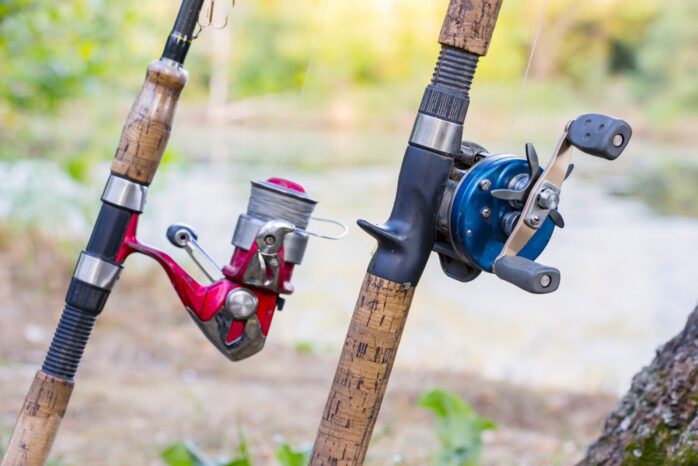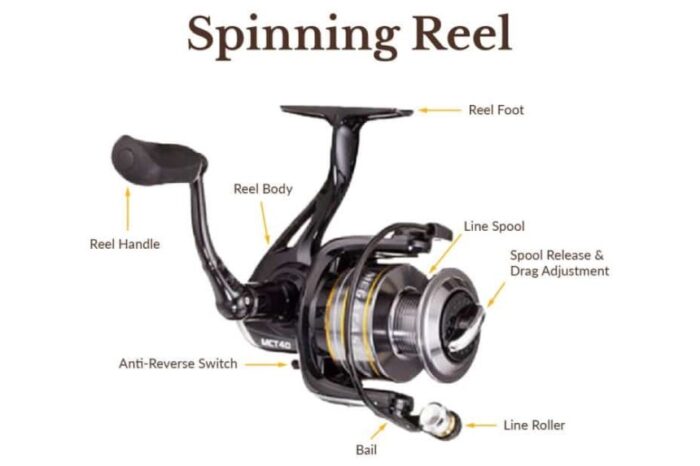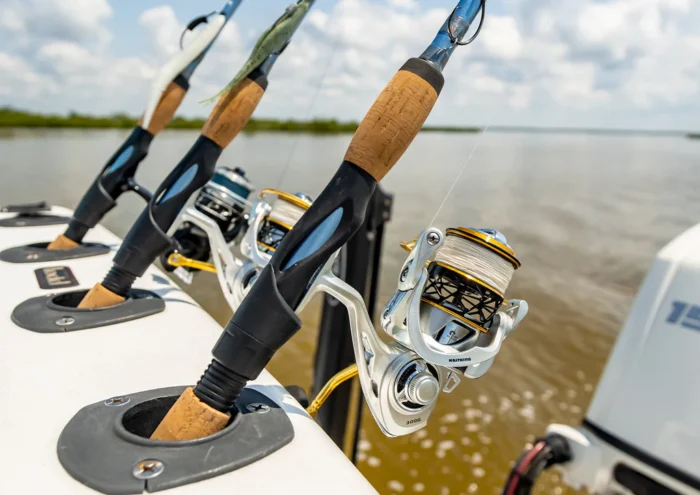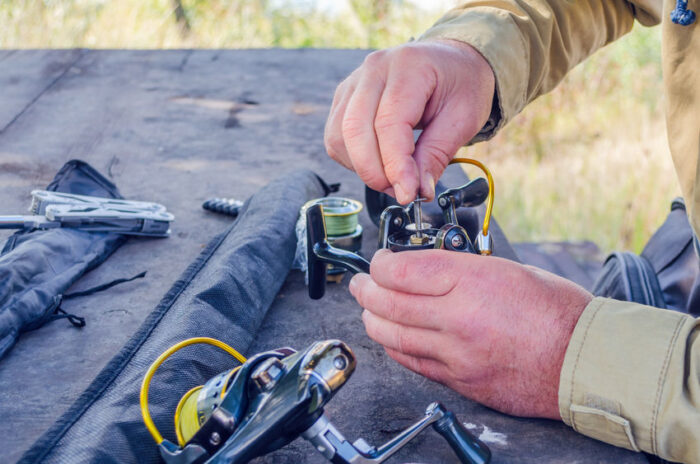
Fishing is not just a hobby; it’s a passion that brings individuals closer to nature. To enhance your fishing experience, choosing the right equipment is crucial. Among the various tools at an angler’s disposal, the spinning reel stands out as a versatile and widely favored option. In this guide, we’ll delve into the intricacies of spinning reels, helping you make an informed decision when it comes to purchasing one.
Understanding Spinning Reels
A spinning reel is a type of fishing reel that hangs below the fishing rod. It’s characterized by an open-faced design and a fixed spool.
Advantages of Using a Spinning Reel
- Versatility in Casting: Spinning reels allow for accurate casting over long distances, making them ideal for various fishing conditions.
- Ease of Use: They are beginner-friendly, making them suitable for anglers of all skill levels.
- Reduced Line Twist: Spinning reels minimize line twisting, which can be a common issue with other reel types.
Components of a Spinning Reel

- Handle: The handle is used to turn the rotor, which in turn retrieves or releases the fishing line.
- Body: Also known as the frame, the body houses the essential internal components of the reel.
- Rotor: The rotor is a pivotal part that revolves around the spool, facilitating line retrieval and release.
- Bail Arm: This is a hinged metal arm that flips open and closes to guide the fishing line onto the spool during casting.
- Spool: The spool is the cylindrical component around which the fishing line is wound. It rotates to release or retrieve the line.
- Drag Knob: The drag knob is used to adjust the tension on the fishing line, allowing it to be pulled out smoothly or with more resistance.
- Drag System: The drag system controls the amount of pressure needed to pull the line off the spool, preventing the line from breaking during a fight with a fish.
- Line Roller: This small, often ball-bearing, component guides the line onto the spool during retrieval.
- Anti-Reverse Switch: This switch prevents the handle from turning backward, ensuring the hook remains set when reeling in a fish.
- Handle Knob: The handle knob provides a comfortable grip for the angler to turn the handle.
- Reel Foot: The reel foot is an attachment point that allows the reel to be securely attached to the fishing rod.
- Handle Arm Support: This part provides stability to the handle and is usually located on the opposite side of the handle.
These components work in harmony to make the spinning reel function effectively and smoothly, allowing anglers to cast and retrieve their lines with precision and control.
Popular Brands in Spinning Reels
Several reputable brands dominate the spinning reel market. Shimano, Daiwa, and Penn are known for producing high-quality reels that cater to various preferences and budgets.
Mastering the art of casting and handling fish on the line is crucial for success with spinning reels. Understanding the reel’s drag system and adjusting it appropriately can make a significant difference in your fishing experience.
Choosing the Right Spinning Reel

Selecting the perfect spinning reel is crucial for an enjoyable and successful fishing experience. With various options available in the market, it’s important to consider a few key factors to make an informed decision. Here are some important considerations:
1. Fishing Environment
Freshwater vs. Saltwater: Determine where you’ll primarily be fishing. Freshwater reels are designed for lakes, rivers, and streams, while saltwater reels are built to withstand the corrosive effects of saltwater.
2. Reel Size
Line Capacity: Consider the amount of fishing line the reel can hold. Larger reels have higher line capacities and are suitable for bigger fish and longer casts.
3. Gear Ratio
Retrieve Speed: The gear ratio indicates how quickly the line is retrieved. A higher gear ratio (e.g., 6:1) means faster retrieval, ideal for lures that need to be moved quickly.
4. Drag System
Smoothness and Strength: Look for a reel with a smooth and strong drag system. This is crucial for controlling the pressure on the line during a fight with a fish.
5. Ball Bearings
Smooth Operation: More ball bearings generally result in smoother reel operation. Look for quality bearings made from materials like stainless steel or ceramic.
6. Material and Construction
Frame and Body: Opt for reels made from durable materials like aluminum or graphite. This ensures longevity and resistance to corrosion.
7. Weight
Balance with Rod: Consider the weight of the reel in relation to the fishing rod. A well-balanced setup reduces fatigue during long fishing sessions.
8. Brand and Model
Reputable Manufacturers: Stick to well-known brands with a reputation for producing high-quality reels. They often offer better warranties and customer support.
9. Budget
Price Range: Determine your budget and look for reels that offer the best combination of features within that range. Avoid compromising on essential features for a lower price.
10. Personal Preference
Comfort and Feel: Visit a fishing tackle store if possible and physically handle different reels. The one that feels most comfortable and suits your style is likely the best choice.
Remember, the right spinning reel can greatly enhance your fishing experience, so take your time to research and consider these factors before making a purchase. Happy fishing!
Maintaining Your Spinning Reel

Cleaning and Lubricating
Regular maintenance ensures your spinning reel performs optimally. Clean it after each use, removing any dirt or debris. Apply reel oil to crucial parts to prevent corrosion and ensure smooth operation.
Storage Tips
Store your spinning reel in a cool, dry place. Avoid leaving it in direct sunlight, as extreme temperatures can damage the internal components.
Conclusion
Investing in a quality spinning reel can significantly enhance your fishing experience. By understanding its components, choosing the right one, and maintaining it properly, you’ll enjoy years of successful angling adventures.
FAQs
1. Can I use a spinning reel for saltwater fishing?
Yes, many spinning reels are designed specifically for saltwater conditions. Look for models made from corrosion-resistant materials.
2. What’s the ideal gear ratio for freshwater bass fishing?
For bass fishing, a gear ratio between 6.4:1 and 7.1:1 is generally recommended. This provides a good balance of speed and power.
3. How often should I lubricate my spinning reel?
It’s advisable to lubricate your spinning reel after every few uses or if you notice any signs of stiffness or resistance during operation.
4. Can I replace the handle on my spinning reel?
Yes, most spinning reels have interchangeable handles. Ensure you choose a compatible handle for your specific reel model.
5. What’s the lifespan of a spinning reel?
With proper care and maintenance, a high-quality spinning reel can last for many years, providing reliable performance for countless fishing trips.











